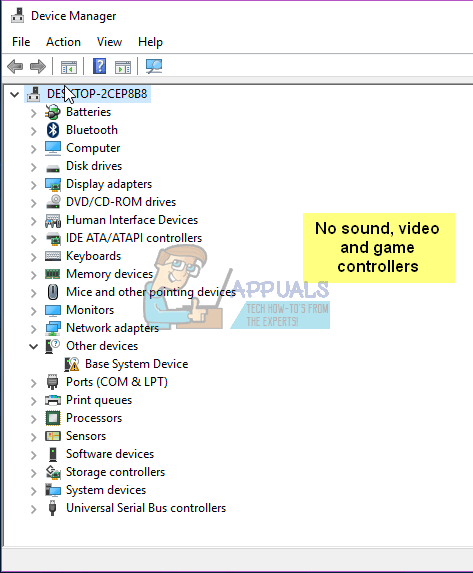How to Fix Missing ‘Sound, Video and Game Controllers’ in Device Manager
The “Sound, video and game controllers” category missing from Device Manager indicates that the system is unable to detect or recognize the hardware responsible for sound and video processing. The most common cause is a corrupted or outdated driver, often triggered by a recent Windows update, or sometimes due to missing or improperly installed chipset drivers. Additional causes can include a malfunctioning hardware component or issues with the BIOS.

Method 1: Run the sound and hardware troubleshooter
The troubleshooter is likely to find the best sound drivers for your PC and install them automatically for you. It will be a good idea to have an internet connection so that the troubleshooter can search for drivers online.
- Press the Windows logo key + R to open the Run dialog box.
- Type control in the Run dialog box, then press Enter.
- In the Search box in Control Panel, type troubleshooter, and then click Troubleshooting.
- Under the Hardware and Sound item, click Configure a device. If you are prompted to enter an administrator password or provide confirmation, type the password or provide confirmation.
- Press Next and let the troubleshooter scan for problems. Fix all emerging problems.
- You may have to restart your PC.

Method 2: Install drivers manually
If the troubleshooter doesn’t install your drivers, you might try installing the sound drivers by manually invoking the device manager to look for your sound card drivers. Connect to the internet for better results.
- Press the Windows logo key + R to open the Run dialog box.
- Type devmgmt.msc in the Run dialog box, then press Enter. If you are prompted for an administrator password or confirmation, type the password or click Allow.
- Since your device is missing, it might not be visible to you. From the device manager window, click View and select Show hidden devices (unless it already has a tick on the left). If you still don’t see your device, click on Action, then select Scan for hardware changes.
- Your sound device is likely to be listed under ‘Other Devices’ (usually lists uninstalled devices) with a yellow triangle on it.
- Right-click on the device and select “Update Driver Software.”
- Click on “Search automatically for updated driver software” to allow an automatic search.
- Let the computer search for the drivers and install them.
Method 3: Look for your sound drivers online and install them
If you are unable to resolve the issue automatically, you will have to find and install your drivers manually.
- Go online to your computer manufacturer support page and find drivers for your sound card. For example, you can find Toshiba Realtek audio drivers here.
- Double-click on the drivers to install them. Other types of drivers require you to extract them from a zip file, then click on the installer/setup file in order to install them.